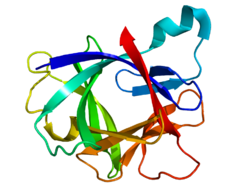Despite the above, fatigue is hard to define. We might say we’re tired but that doesn’t quite cut it does it? Sometimes I’ll tell T I’m tired and he’ll tell me to lay down. I rebut with some iteration of ‘well, it’s not sleepy tired though.’ I might go on to talk about my lack of spoons.
It can be hard to recognize what is fatigue versus things like drowsiness for some. Personally it isn’t, but it can be hard to distinguish drowsiness for regular sleepy tired.
Monsieur Fat-i-gue doesn’t come to a party alone. He usually brings his pals like muscle soreness or weakness, joint pain, headaches, sore throats, and more. He’s really a popular guy. The fact that he has so many friends makes it hard sometimes to get to the root cause of the issue. Sometimes it’s just that we’ve spent our spoons. Other times it might be a sign of a flare up or worsening disease. For others still, this could mean a new diagnosis is on the way or that medications are having more side effects than they used to.
It can be easier, depending on what’s causing the fatigue, to get help. If it’s a thyroid issue, starting on medication for this will help. Some of us are anemic or vitamin deficient and bumping up those levels can really help. These are all things that need to be discussed with your doctor though, as vitamins and that fun stuff also have interactions, contraindications, and side effects. If it’s a medication issue, you might discuss starting a different medication or changing dosages.
There are a lot of things that can aggravate fatigue, from alcohol to caffeine dependence to weight to inactivity or working out too much to depression and grief to our medical conditions and medications. It’s important to learn how to take a step back and check in with yourself to see if any of the non-medical things could be the cause to your fatigue.
For some, fatigue is its own disease. Chronic Fatigue Syndrome (also known as Myalgic Encephalomyelitis or by the new name, Systemic Exertion Intolerance Disease) can be really devastating.
Generally this is a disease of exclusion where your doctor will make sure things like fibro, lupus, other autoimmune arthritis types, diabetes, and more aren’t the culprits. That said, many with CFS/ME/SEID do have a lot of overlapping conditions like fibro so it’s a hard one to diagnose.
Unfortunately CFS/ME/SEID is like fibro in that there are many doctors out there who don’t believe these are very real and concrete medical conditions. They think, instead, that there is some psychosomatic issue at play. It’s unfortunate because you then wind up with a lot of people who need medical attention and help but aren’t receiving it either because their doctor hasn’t brought up the disease due to their beliefs or because they refuse to treat a patient with anything more than therapy.
If you or someone you love has fatigue, it’s important to fight to find the root cause. If you already have an autoimmune disease, that may be the culprit but isn’t always. Track how you feel, especially if things like weather play into it. Track your medications and physical activity so you can see if you may be overusing your spoons or having a reaction to meds. Most importantly, seek second opinions if you run into a doctor who isn’t listening to you.
As always, you really have to be your own advocate with these things. Know that myself and others are here if you need help.
































